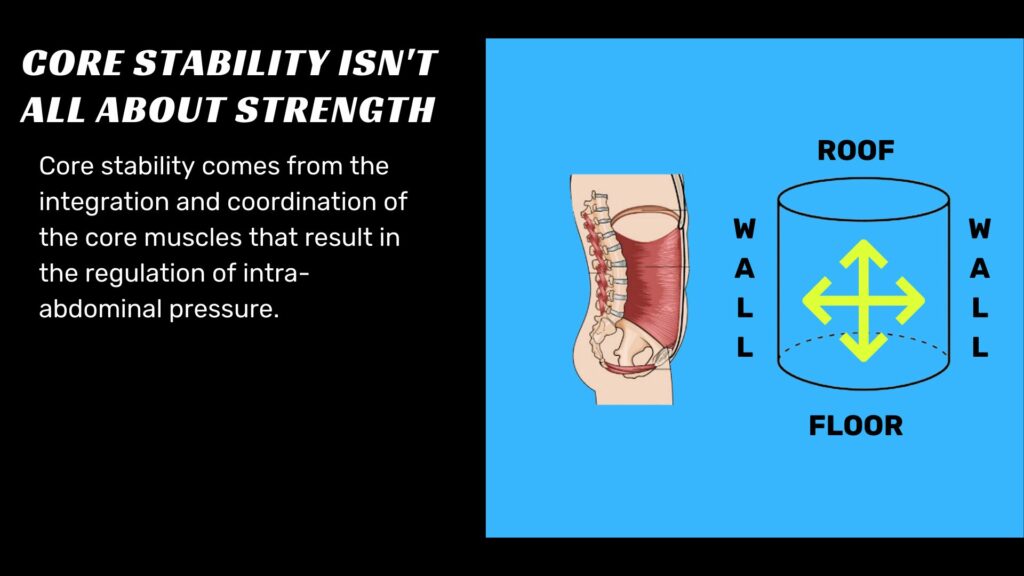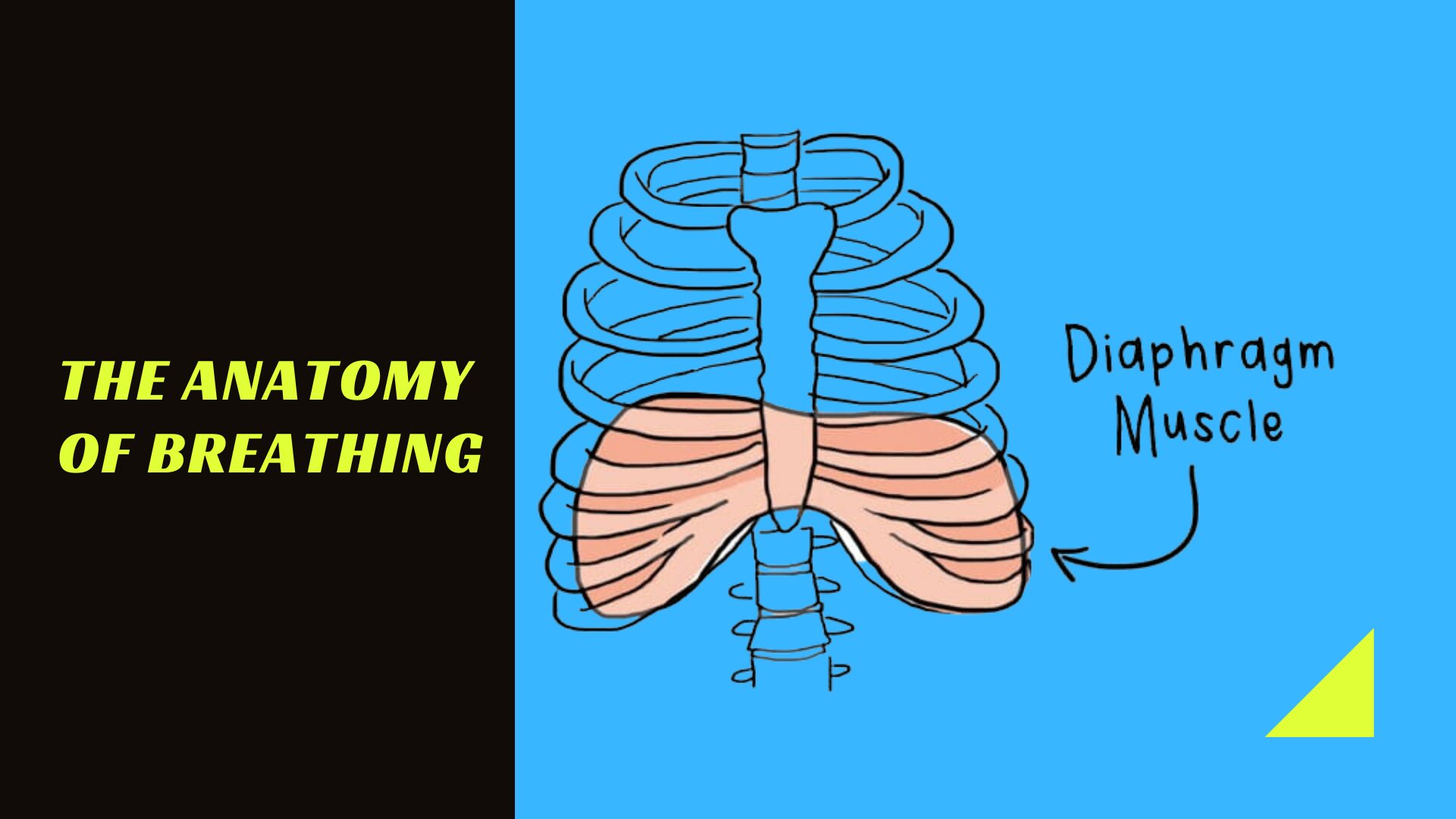“If you can’t breathe in that position, you can’t survive in that position.” – Gray Cook
When you think of the core, what muscles do you think of? Most of you probably think of the abdominals, the muscles you strengthen with sit-ups and planks.
The core actually involves more than just your abdominals. It also includes the diaphragm, pelvic floor, and all the other muscles that are influenced by these major “core” muscles. More importantly, core stability is more than just the muscles that make up the core but how those muscles work together. It comes from the integration and coordination of the core muscles that result in the regulation of intra-abdominal pressure.
Think of your abdomen like a cylinder. To maintain stability, we need to maintain intra-abdominal pressure. Without the diaphragm and pelvic floor, the tension of the abdominal wall would fail to create intra-abdominal pressure as it escapes out the top and bottom of the cylinder. You can see in the picture below how important it is to have coordinated movement of the roof (diaphragm) and floor (pelvic floor) of this cylinder for maximal intra-abdominal pressure and stability.

When we breathe in, the diaphragm (a parachute-shaped muscle that divides the thoracic cavity and abdominal cavity) descends into the abdomen. Air passively comes into the lungs. This pushes pressure down into the abdomen, allowing the abdominals and pelvic floor to relax and expand while intra-abdominal pressure is maintained. When we exhale, the diaphragm relaxes into an elevated position. A coordinated movement allows the pelvic floor and abdominals to contract at the same time, maintaining the pressure and stability inside the abdomen.
There are a few ways that we get this wrong. Even though breathing is an automatic activity (thankfully we don’t have to think about it all day!), there are several reasons that breathing becomes dysfunctional or uncoordinated. These can include trauma, posture, lifestyle, etc. Trauma occurring as early as in-utero (i.e. if your mom was in a stressful situation while pregnant with you) can change how you breathe for the rest of your life. It can take quite a lot of conscious practice to overcome these automatic dysfunctional breathing patterns.
Most of the people I see breathe into their chest by using accessory muscles, which are the muscles of the neck and upper chest. They then complain of neck and shoulder pain. Others will actually hold their diaphragm for stability, creating limited mobility in the diaphragm. There are many other faulty breathing patterns but the important takeaway is that it’s worth learning how to breathe correctly.
Breathing correctly is ESSENTIAL for core stability but it’s also essential for so much more:
- Healthy digestion
- Cardiovascular health
- Healthy nervous system (decreased anxiety, depression)
- Decreased pain (breath retraining is associated with decreased low back pain)
- Improved neck and shoulder mobility
I could go on for hours about how important breathing correctly is but for now, check out these videos to compare dysfunctional chest breathing to healthy diaphragmatic breathing:
CHEST BREATHING ❌
DIAPHRAGMATIC (BELLY) BREATHING ✅
Steps to Take
- Assess your own breathing – Place a hand on your chest and a hand on your abdomen. Where do you feel the most movement? It should be in your abdomen.
- Have a professional assess your breathing – There is a lot more to it than just making sure the diaphragm is doing its job. A professional can also assess some of the restrictions (diaphragm mobility, thoracic spine mobility, rib mobility, etc). A professional can also assess the coordination and quality of the movement.
- Learn how to breathe correctly – Once you have the mobility you need to breathe well, you need to learn the proper movement and coordination of the diaphragm, abdominals, and pelvic floor.
- PRACTICE – Breathing is a subconscious activity. To change our automatic pattern, we have to practice the new pattern as much as possible. I recommend setting an alarm a few times a day to take some conscious breaths.
- Integrate – A movement professional can help you incorporate your new and improved breathing pattern into progressive core exercises. We need to be able to use our diaphragm during movement and strain, so it’s important to learn how to coordinate these movements. Any exercise can be a core exercise if done correctly with the proper breathing techniques.

